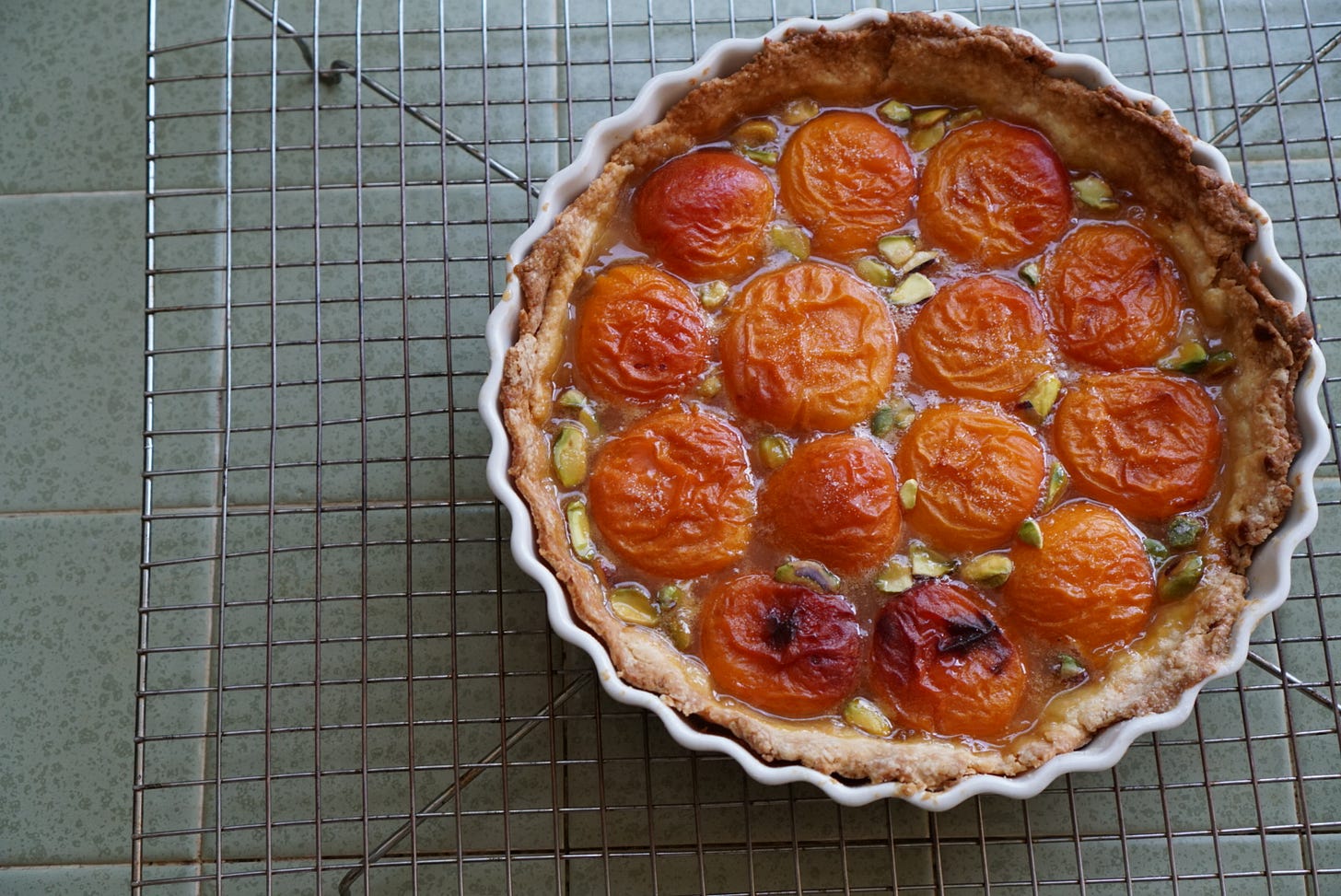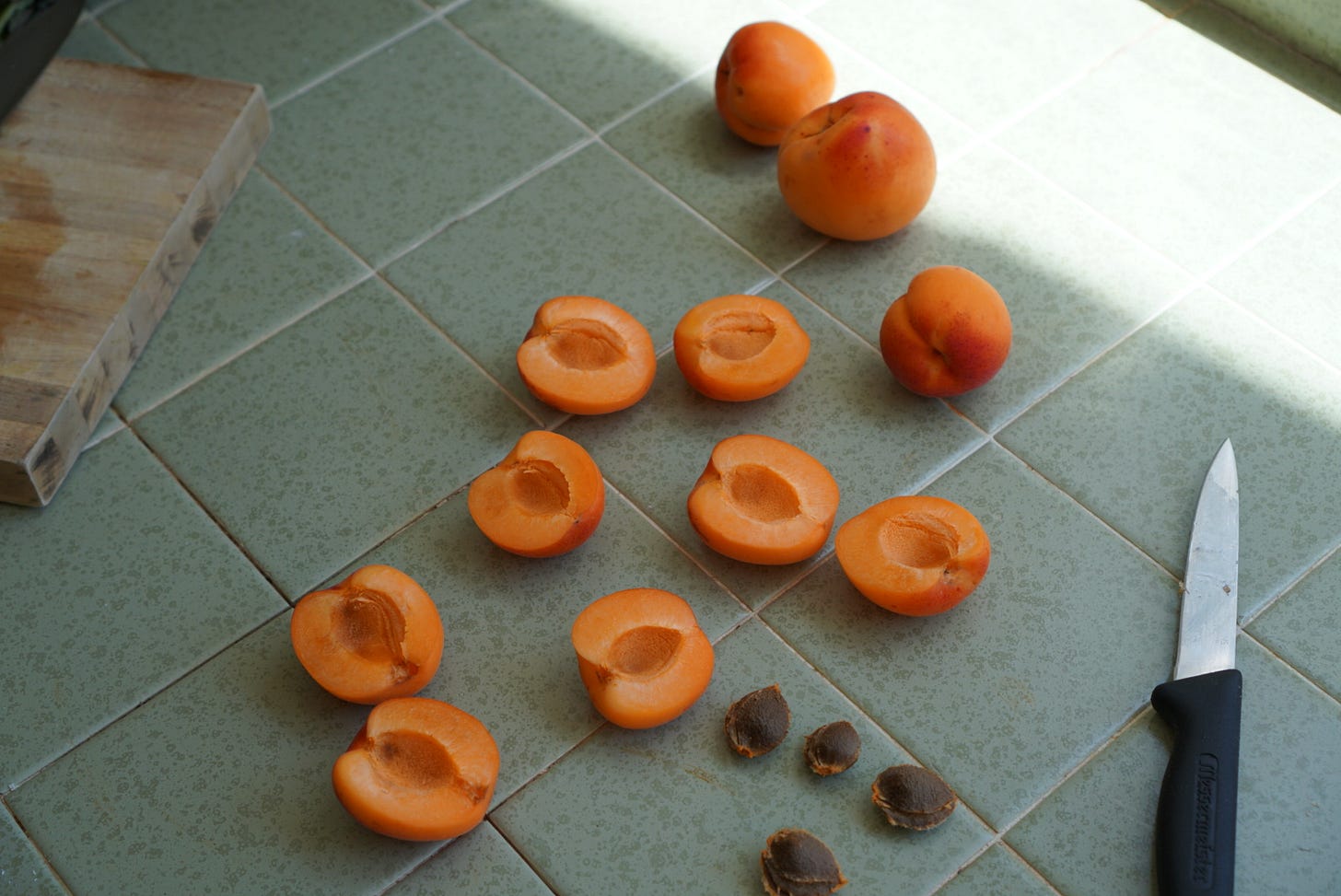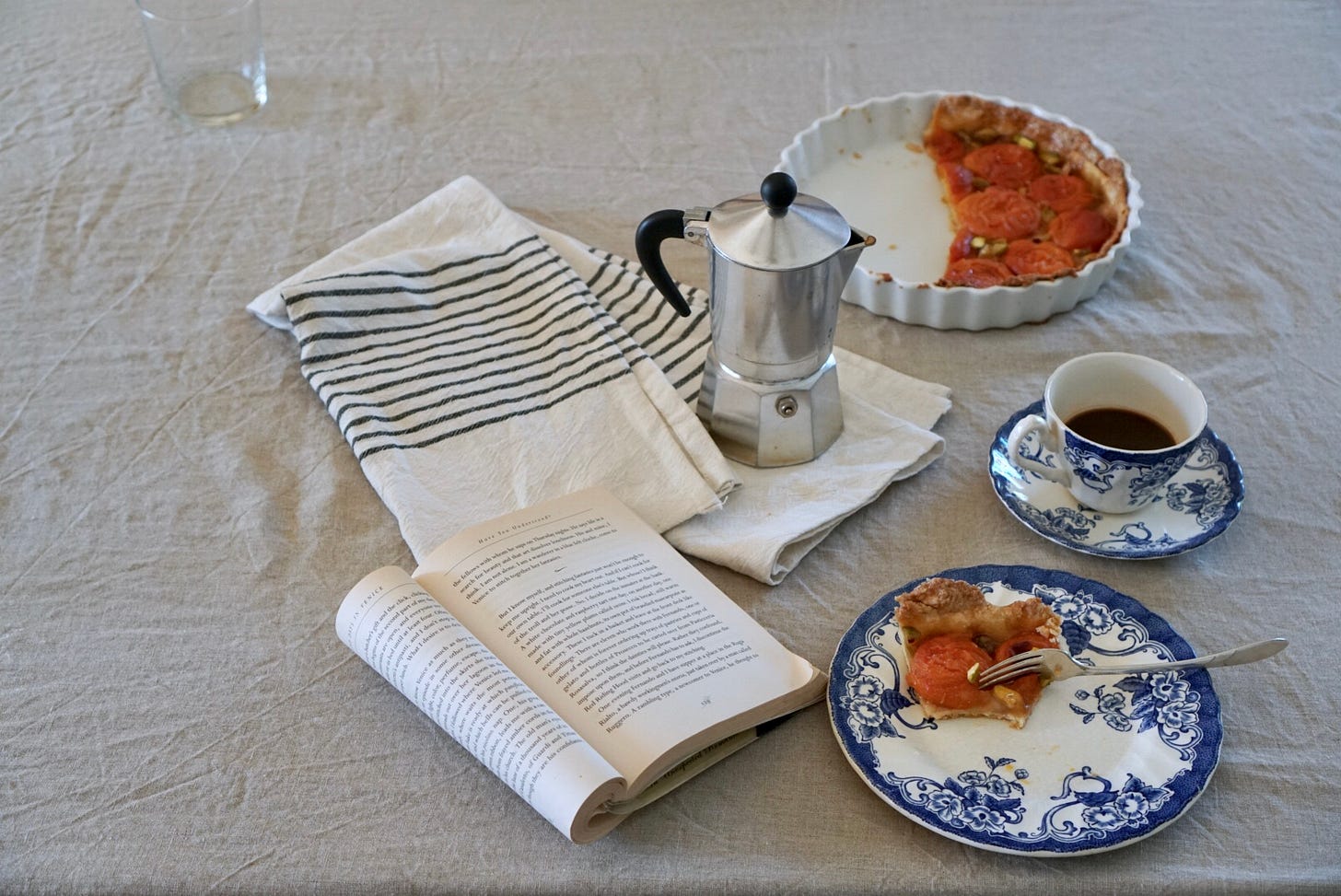Welcome to mamaeats, my twice-weekly newsletter (Tues. & Sat.) inspired by my simple + seasonal home life. I’m a mother of three, avid reader, gardener, and home cook who focuses on nourishing, whole food, plant-based meals. This newsletter is my labor of love—if you are not already, and are able to do so, please consider becoming a subscriber to support my work here, which takes time and effort. Doing so gives you access to all the archives and recipes (find the recipe index here), as well as my cook-along videos which go with most recipes. If a recurring payment is too much for you right now, but you’d still like to contribute, I’d be delighted to receive a one-off tip via my ko-fi. As always, thank you so much for being here, reading this newsletter, and sending me your thoughts.
After an unseasonably cool June, in which I wore a sweater many mornings and evenings and could leave the windows open most of the day, summer has finally arrived—whooshed in really, hot and full and a bit oppressive. The heat, I mean. I love it, really I do most of the time, it’s just that I’m not used to it yet, and it makes me want to loll about, taking naps and eating granita. In actuality, I’ve been working hard in spite of the heat, especially focused on the garden at the moment. Trellising beans and cucumbers, picking and using all the zucchini and stonefruit, staking cosmos against towering sunflowers, picking giant caterpillars off tomato plants. Gardening is really a trial and error, for me at least, and I finally feel like I’m understanding what works to grow here, what doesn't, and how to garden in harmony with my soil, our taste preferences, and the heat. It’s all good fun though, and very rewarding work.
We only have one summer bearing fruit tree that is original to our garden, a ‘Santa Rosa’ plum, its trunk as twisted and gnarled as arthritic old hands—what my mother scared me into imagining mine would be like when she used to warn me against cracking my knuckles. It makes excellent plums, but I’m greedy and wanted all sorts of fruit trees. We planted a peach, pomegranate, apple, and one of my nostalgic forever favorites, an apricot.
Good apricots these days are hard to come by. Grocery store ones and even sometimes ones from the farmers market can be pale fleshed and taste disappointingly insipid, with a cottony texture. I am forever spoiled by the apricots of my childhood. When I was small, we used to make an annual pilgrimage to a friend of my grandmother’s and pick her trees. They were Blenheim apricots, which are sunset orange with shoulders that looked like mine after a day at the river, freckled and burnished. They have an intense honeyed taste with the perfect balance of tart and sweet. Her trees were old, old ones, and they made petite, perfect fruit smaller than a walnut. We’d line wooden lugboxes with newspaper and pick them full of fruit, little orange gems. My mother’s kitchen would buzz in a flurry of canning and baking and dehydrating as we raced against time to process them before they rotted. The pit is intensely almond-flavored, and it was my job to drop one or two in each canning jar for flavor; plink, plunk.
Blenheims, an old European variety once grown extensively in California, have been grown less and less over the years as many farmers rip out old fruit orchards and turn to growing nuts here in California. Nuts are less risk and more reward than fruit, as the market for nuts has boomed (California supplies around 80% of the world’s almonds). Blenheims are singularly delicious; they are in the Slow Food Ark of Taste, a list of endangered, distinctively flavorful heritage foods. They bruise almost immediately and are often passed over at markets for their dimunitive size and green shoulders even when fully ripe inside. But you can still find these heirloom apricots here and there if you know where to look, and a local-to-us farm has some trees that you can pick alongside strawberries. We took a drive out there and picked them both, the teeniest most fragrant strawberries and those apricots, too. It was hot, even though we went in the morning, sweat dripping and stinging eyes as we picked, backs aching, the hot sweet smell of the sun bleached grass heavy in the air. I said a silent little prayer of gratitude for all the farm workers who do this thankless, hard labor day after day.

We got home and I made this tart, simple as usual, to really taste and honor the apricots, still warm from the sun as I halved and pitted them. It was meant to be, really, only a handful on the tree were ripe enough, but they fit exactly right in my tart pan— neither too much nor too little.

Even if you do not bake, you can make this. It’s very easy. First, make your favorite single crust tart or pie dough (if it’s the rolling out of dough that irks you, this press in one works a treat) and line a tart pan with it, layering the apricot wedges in tight concentric circles. Sprinkle sugar over them, a bit more if your apricots aren’t perfectly ripe or sweet, a bit less if they are. You will know how much. Then slide into a hot oven and bake until the juices are bubbling and the crust is lightly browned, with the apricots wrinkling and slumping beautifully in the pan, day-glo orange. Brush a bit of warmed apricot jam over the top for a beautiful glossy finish. Let it cool at least to just-warm before slicing— I always think when it’s hot it’s just not as full flavored, and the juices won’t set before then.
simplest apricot tart
notes: use your favorite crust recipe here, mine is Alison Roman’s The Only Pie Crust. I also occasionally deviate to Carla Lalli Music’s Extra Flaky Pie Crust. This tart can be adapted to most fruits, although if your fruit is juicy, I would recommend tossing it with some thickener first: here is a good guide, which gives amount of thickeners per cup of all different fruits. A good variation is to scatter over raw, unsalted pistachios before baking— a nice texture and flavor. Another is to grate a big handful marzipan over the bottom of the dough instead of the ground almonds. If you are allergic to nuts, you can definitely leave off the ground almonds. And if your crust is browning too fast before the fruit is cooked fully, cover with aluminum foil folded around the outer bit.
a batch of single crust pie/tart dough, chilled for 30 minutes after making
a tart pan
2 tbsp ground almonds
8-10 ripe, soft apricots, or enough to fit your pan
sugar to taste, I used 2 tbsp
a few spoons apricot jam
Preheat the oven to 375F/190C. Roll the dough out in a circle a bit larger than your tart pan. Lay the dough into the pan and press into the edges, trimming as necessary. Sprinkle the ground almonds evenly over the bottom. Halve or slice the apricots and arrange them into a single, snug, slightly overlapping layer over the dough. Sprinkle over the sugar evenly.
Pop into the hot oven and cook until the pastry is golden brown, the juices are bubbling thickly and apricots are a bit slumped, about 30-40 minutes.
Warm the jam in a saucepan for 20 seconds or so to make it a bit runny. Brush the jam over all the apricot surfaces. Let the tart cool on a cooling rack before slicing.
Particularly enjoyable with a cheeky afternoon coffee on a summer’s day, with a good book.









